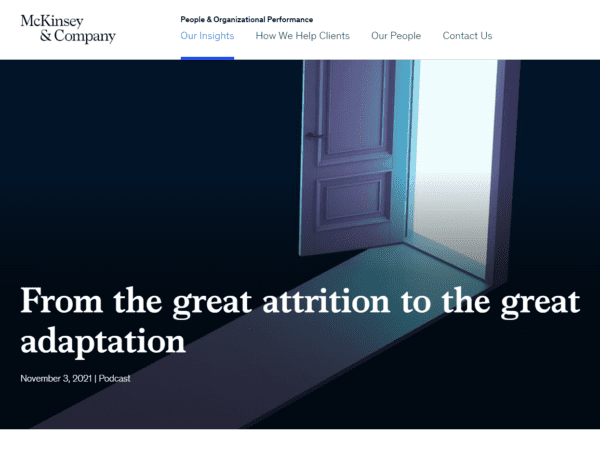Hybrid work – Making it fit with your diversity, equity, and inclusion strategy.
This article was published by McKinsey Quarterly on 20th April 2022.
New research details what empowered employees love about hybrid work models and the risks to diversity, equity, and inclusion if managers get the evolving flexible workplace wrong.
After the Great Resignation comes the Great Renegotiation. Over the past two years, millions of people and organizations around the world were forced into hybrid virtual work, many for the first time. Survey after survey has shown that employers eagerly hope their employees will return to the office as soon as possible. Employees? Not so much, for reasons including health, family, and the work–life balance. Now, vaccines and therapies hold out the promise of normalizing life under the coronavirus and its variants, but employees increasingly hold more bargaining chips in a great debate now underway over the future of workplace models.
Our latest research reinforces the idea that hybrid1 work is here to stay. More than four out of five survey respondents who worked in hybrid models over the past two years prefer retaining them going forward (see sidebar, “Our methodology”). At a time when organizations are plagued by burnout, mental-health issues, and record numbers of employees leaving their jobs, leaders who see in-person work as a return to normality must confront just how strongly employees feel about flexible workplace models and their growing leverage to pursue them. We found that more than two out of three employees who prefer hybrid models say they are likely to look for other opportunities if asked to return fully on-site. Despite such popular support, the experience of employees with hybrid work during the pandemic has varied widely in key areas, such as a sense of inclusion and the work–life balance. For some traditionally underrepresented identities, this variability is exacerbated.
As employers work to refit existing workplace models, they face a classic risk/reward choice. Hybrid work has the potential to offer a higher level of flexibility, a better work–life balance, and a more tailored employee experience. These can have a disproportionately positive impact on diversity, equity, and inclusion (DEI) efforts, as well as on performance. Hybrid work also has the potential to create an unequal playing field and to amplify in-group versus out-group dynamics, which can flip those advantages to the liabilities side of the ledger. For workplaces already challenged to diversify and retain employees, adopting ill-conceived hybrid work models could instead speed departures, decrease inclusion, and harm performance.
Make no mistake: tapping the benefits of a more inclusive hybrid work culture is difficult, delicate work. There’s scant evidence of companies that have mastered the challenge. What’s more, the practices needed to take it on can feel nebulous and elusive, especially for leaders who have never worked in a truly inclusive culture themselves. In this article, we share research that illuminates the dynamics that underlie efforts to build inclusion in a diverse, hybrid workforce and the three critical inclusion practices—work–life support, team building, and mutual respect—that leaders should treat as priorities.
Read the full article here.
Authored by: Bonnie Dowling, Drew Goldstein, Michael Park, Holly Price.
Edited by Bill Javetski.



